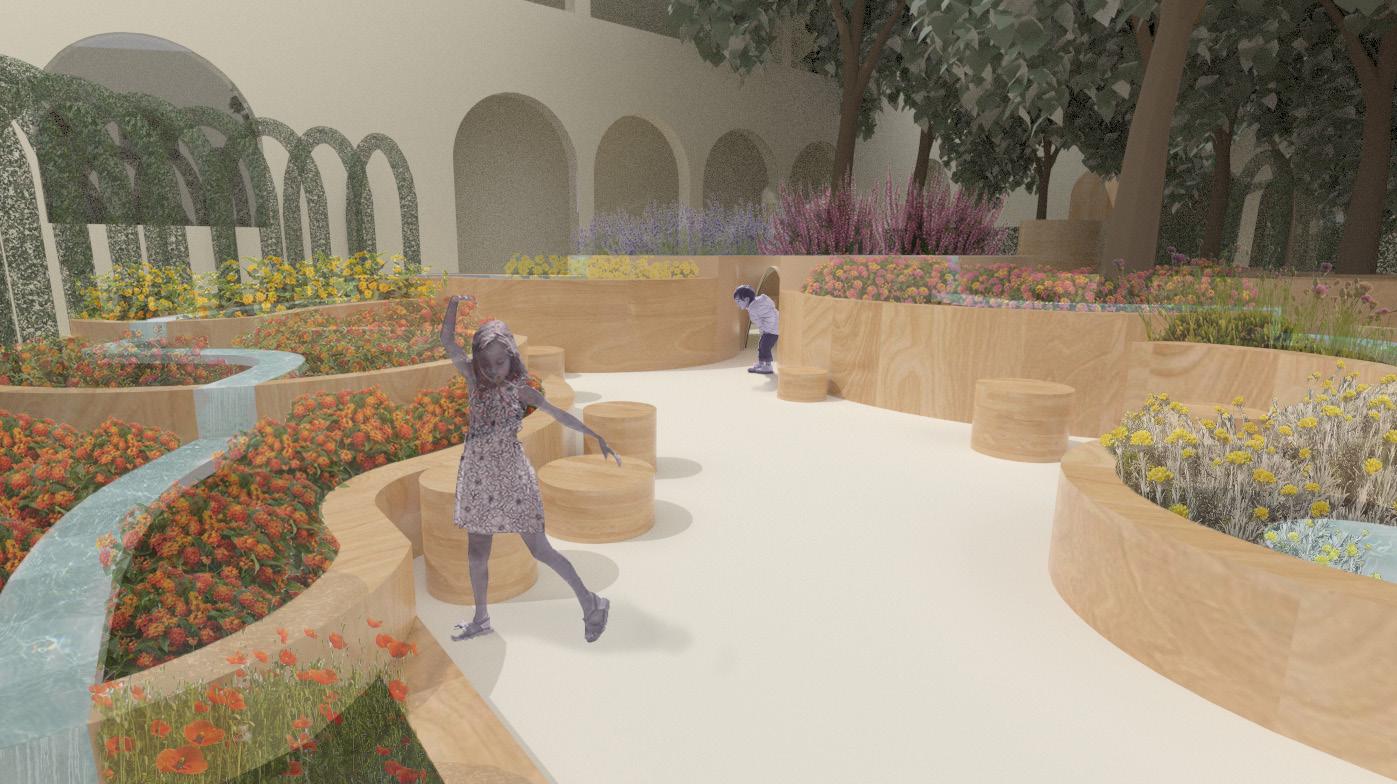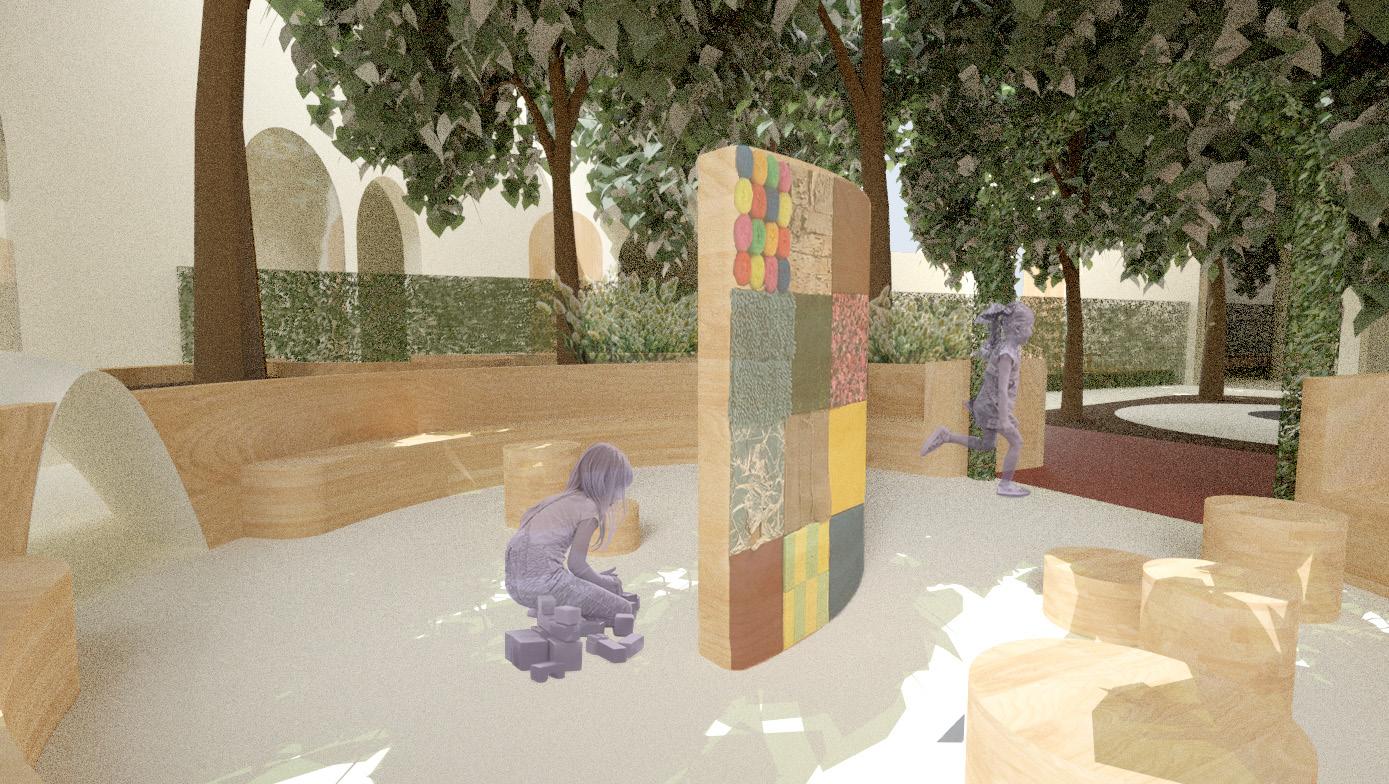
5 minute read
RE-ROOTED:
Identity and Sense of Belonging in Domestic Spaces of South Asian Minorities in Malta

Advertisement
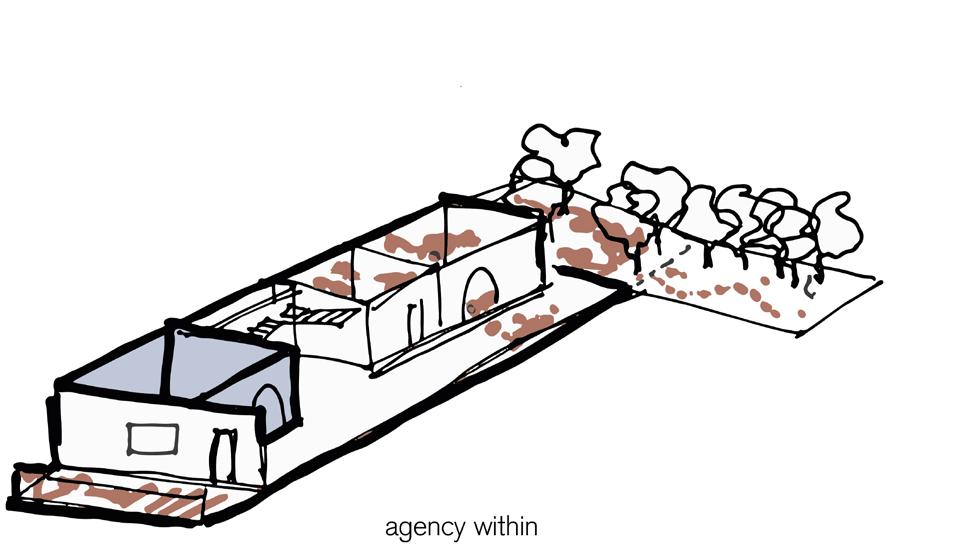

Abstract
This dissertation investigates what it means to be a South-Asian migrant in Malta from the context of domestic spaces, by exploring different narratives on migration and sense of home, and by analysing the different dwellings where such narratives are then inscribed. The act of migration intrinsically transforms the way a person perceives the notion of home and belonging; through the act of moving to a new place, sense of habitus is disturbed, and a new habitus is created in order to cope with a new rhythm of life (Easthope, 2009; Friedmann, 2005). In an age where people are constantly shifting, moving and migrating, identity has also become less rooted and more fluid and hybrid (Easthope, 2009). These changes, along with the different dwellings they own, rent or share, create a shifting dynamic relationship between an individual and their environment.
Therefore, themes within this dissertation explore the different ways people assimilate to their environment, contextualising these changes within the identities of the participants themselves. Through ethnographic fieldwork it is recognised that this context also relies on understanding their identities in terms of being either transient or rooted, based on whether they see a future in Malta or not. The way in which a person envisions their life and future can increase or decrease an individual’s motivations to make their environment a home, or whether it simply acts as a shelter.
This study ultimately aims to shed light on migrant identities, the issues they face, their interpersonal narratives, as well as their relationship to the local built environment. The quality of a dwelling can certainly increase or decrease the quality of life and well-being of individuals, and this dissertation sees the potential of not only providing shelter but providing a home which people can truly make their own, through fantasy and appropriation. Quality housing beyond a shelter is seen as a human right, although inequality in access to such housing is still present amongst people without economic or social means, leading to scenarios where individuals have no choice but to accept and assimilate into their environments.
Keywords: dwelling, home, migration, transient, rooted, assimilation, agency, fantasy
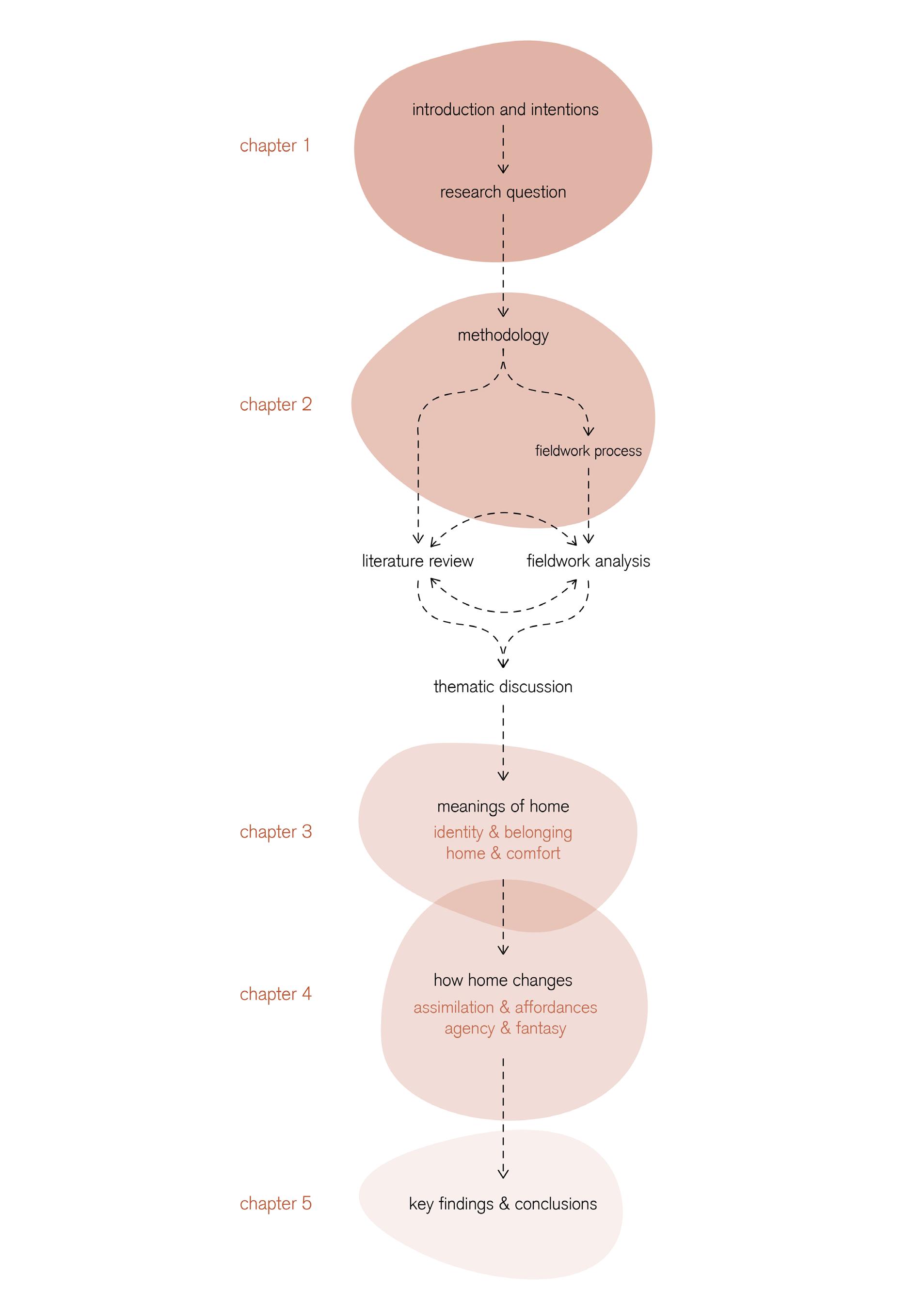
Methodology
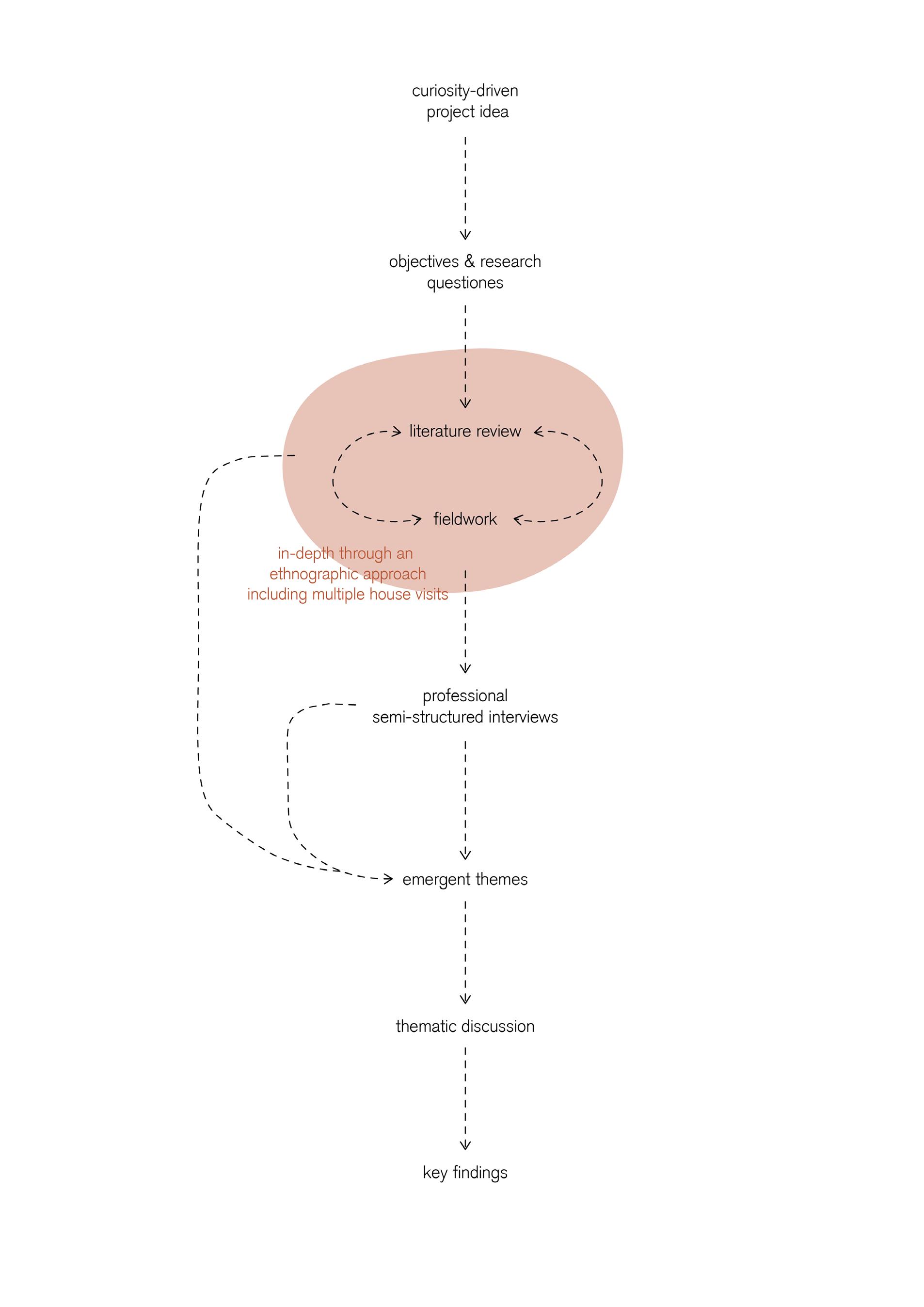
Spatial Analyses
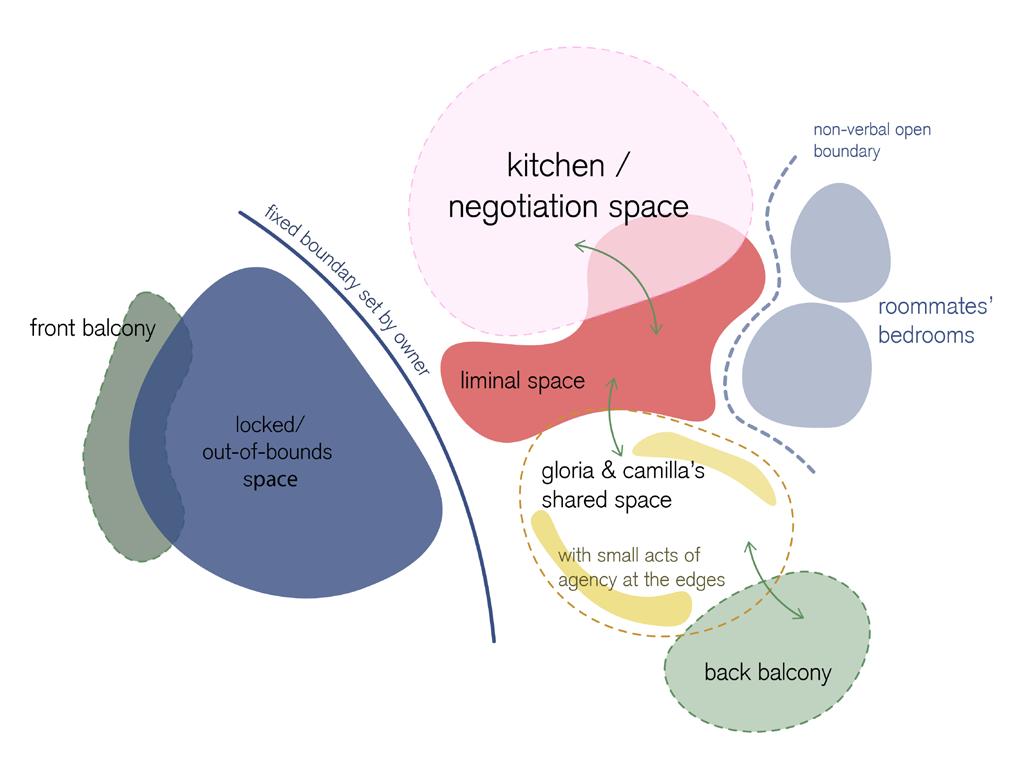


gloria’ssharedapartment gloria’ssharedapartment spatial analysis territoriality between roommates in shared apartment after christine before christine christine and her employer’s house territoriality within live-in carer’s domestic space







Spatial Analyses





Awmar’s owned maisonette

Awmar’s multiple-unit dwelling spatial analysis

Awmar’s multiple-household vision


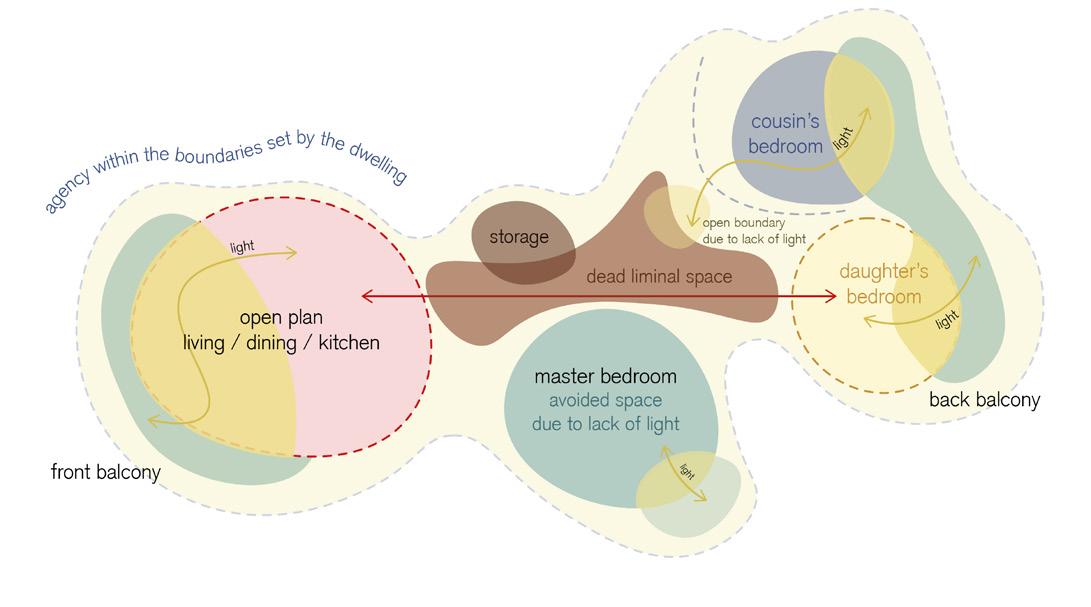


Agency through Flexibility
Acts of agency on their own are not necessarily a means to gain a sense of belonging through space, a space needs to also be flexible, especially when acts of agency are limited to a level of furnishing and ornamentation due to rigidity of the space which decreases opportunity.

Appropriation through Fantasy
Linking back to the previous key finding, the ability to not only appropriate space in a material and real way, but also to appropriate space through the imaginary by daydreaming, imagining and creating a fantasy of your home is important to feel a sense of belonging. Through fantasy, dwellers playfully create new narratives for their home in order to give their dwellings newer and deeper meanings, for the present and future memories. Although as discussed, the way fantasies are created by dwellers may vary depending on their degree of transience, fantasy is something that was present in all four participants and their perception of dwelling. This imaginative aspect is in fact just as important as the functional aspect of space, as imagination in space gives a sense of purpose.
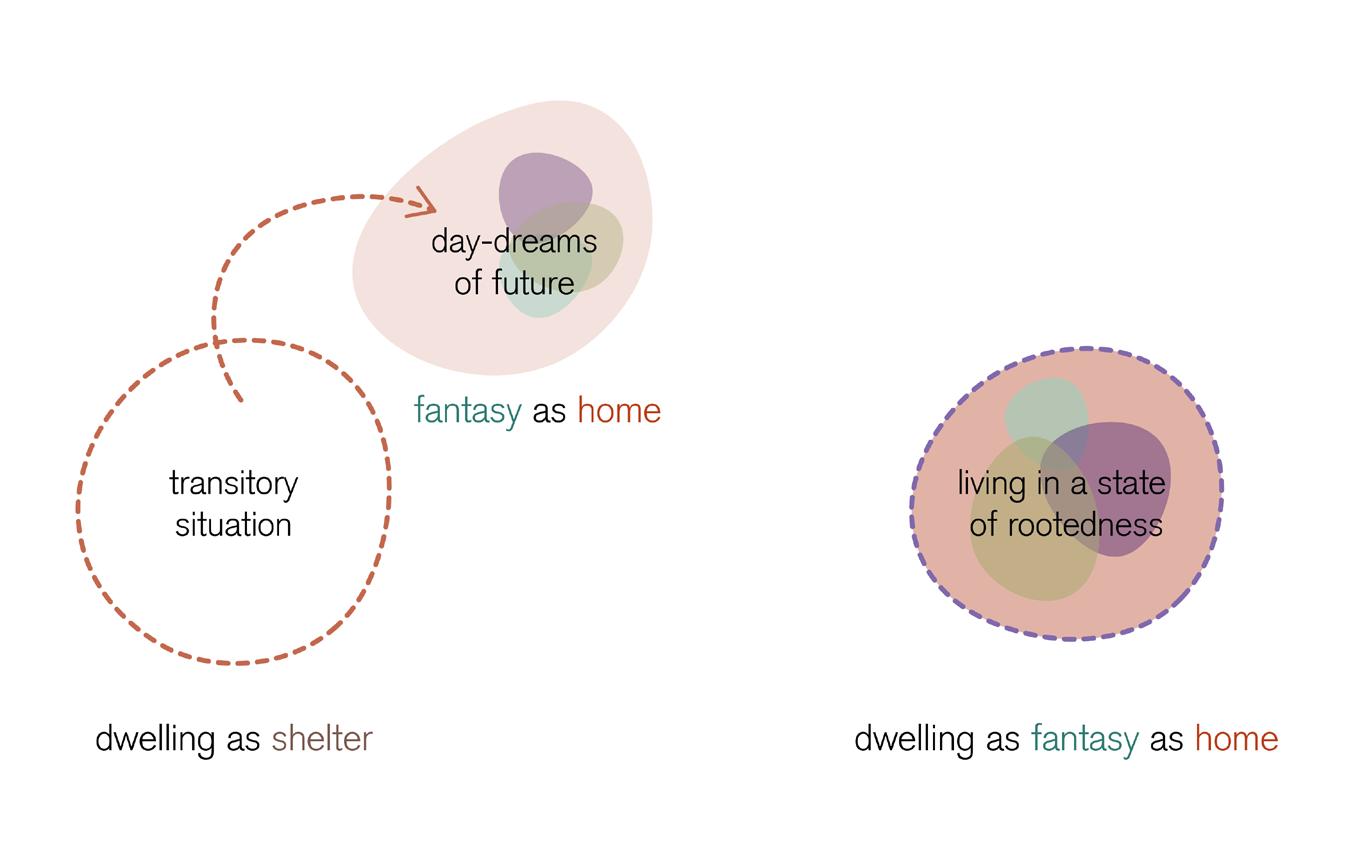
Transitoriness
Transitoriness may induce a space to simply carry the meaning of a shelter, and individuals as a result may feel no sense of attachment to their dwelling, and have no interest to instil a sense of agency through appropriation. For some individuals, this state of transience is temporary as they seek a more permanent sense of home, and would eventually take steps and actions to achieve a sense of rootedness. For others, transitoriness is longer term and in this case, their sense of home is rooted elsewhere and they experience a sense of belonging only through the imaginary/day-dreaming of their future home after transience. They prioritise work and earning a living, and a cheaper dwelling which simply provides enables them to maintain their priorities. To them, it is futile to create a dwelling which is also a home because they plan on leaving this home eventually, and to make it a home in the first place it would require economic investment. However, there is a question which is highlighted on whether is it also right for them to have a lesser quality of space, with less agency, in order to live cheaply even if their dwelling is simply a shelter to them.
Liminal and transitory spaces can carry meaning, especially in conditions which don’t allow for spacious living spaces. These open boundaries created through wide corridors and open wide doorways blend spaces together to create a colourful environment which is less defined and can take multiple iterations with a garden which by nature is a space less defined and more explorative. As observed in Christine’s, due to the width of the corridor and how light and airy it was, the space was activated from a circulation space, to a social space where the roommates can sit together and chat outside of their private bedrooms. Cecilia’s apartment is more defined in terms of use, and has less access to greenery, making it feel more restrictive and rigid, with less affordance and therefore less room to experiment with the spaces themselves

Liminality as Opportunity Connection to Nature
A connection to nature is perhaps one of the most key elements to create a sense of belonging. This connection is not necessarily exclusively through spaces such as a garden, but through a wider definition of nature; through a sensual connection to nature and outdoors. This sensual connection through nature is achieved by allowing dwellers to feel more of the outdoors, whilst they’re in their dwelling; feeling the sun on the skin, feeling a breeze across the face, looking outside a window and seeing some type of nature or greenery, and being in a space which is filled with light and well ventilated. Across different cultures, outdoor spaces can also look differently; someone who comes from a desert climate will see nature different to someone coming from a Mediterranean climate. This wider definition of nature through the senses therefore can create a common experience across different cultures.

WONDERLAND: a garden designed for children with autism spectrum disorder
group project / Karen Muscat, Lyna Loumi, Nadine Zammit role / design concept, plans, model & renders transition spaces interaction and play sensory spaces transition to calbirate the senses sensory garden a space to engage visual, auditory, olfactory and tactile senses main activity space to provide focused tasks main path secondary path circular path transition space main activity space sensory garden escape pods
ASD (Autism Spectrum Disorder) affects the way people can engage with the world around them, especially in how they communicate with others and experience environments through their senses. They often experience sensory differences which, if not regulated, can cause physical and emotional distress through overstimulation and sensory overload, and this can be influenced by the environment they’re in. They are sensitive to light, sound and touch, and bodily awareness may also be affected by ASD.
We designed this space by taking theird needs into consideration, and followed Magda Mostafa’s ASCPECTSS design index to create a space where children with ASD can truly feel comfortable in, and a garden which allows them to grow and be themselves without needing to assimilate to a neurotypical environment.
The space was inspired by Alice in Wonderland, a story that has its roots in the experiences of autistic people, and inspired by certain moments in the story which express certain feelings or experiences.





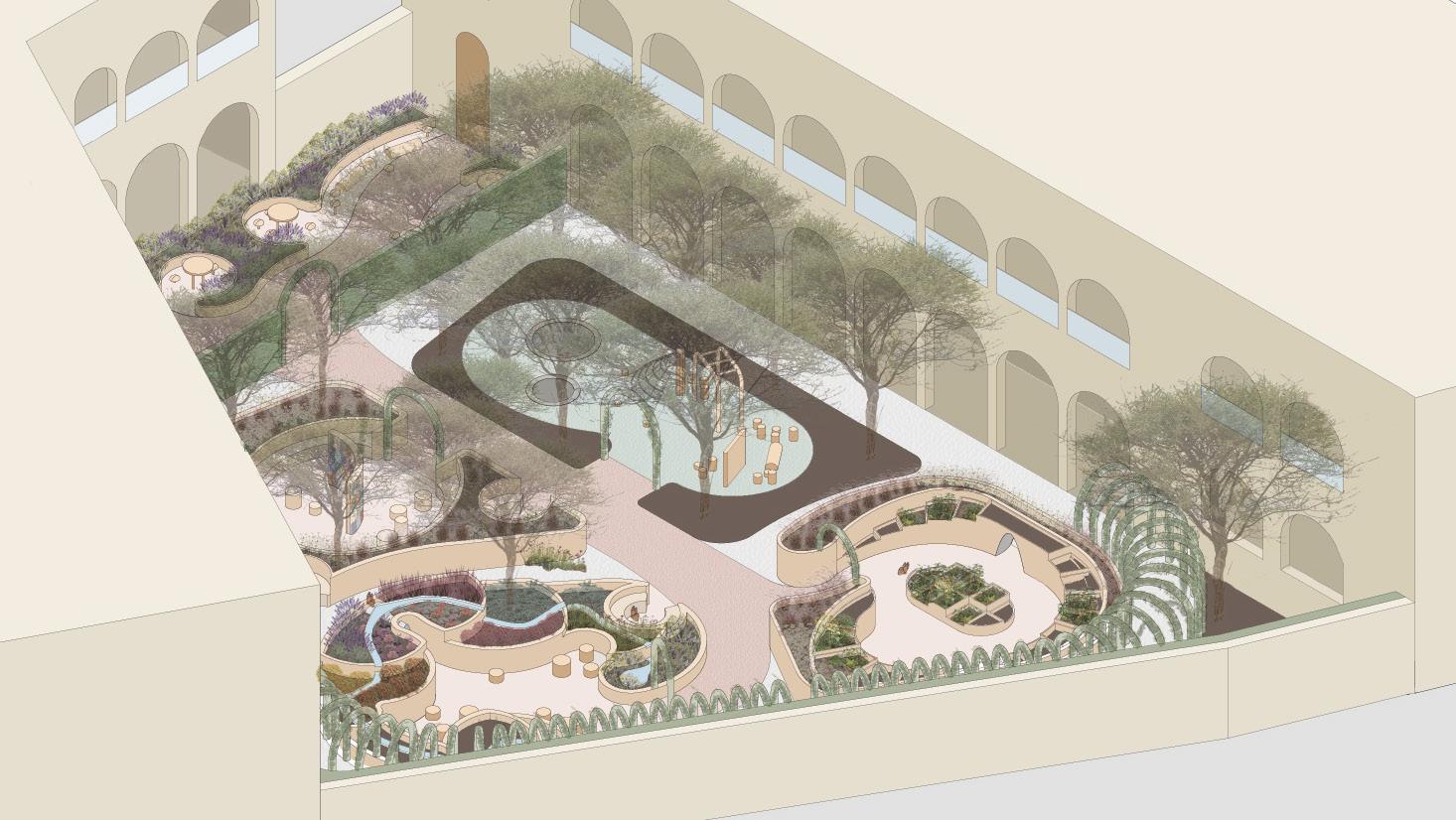
sensory garden / visual, auditory and olfactory sense stimuli
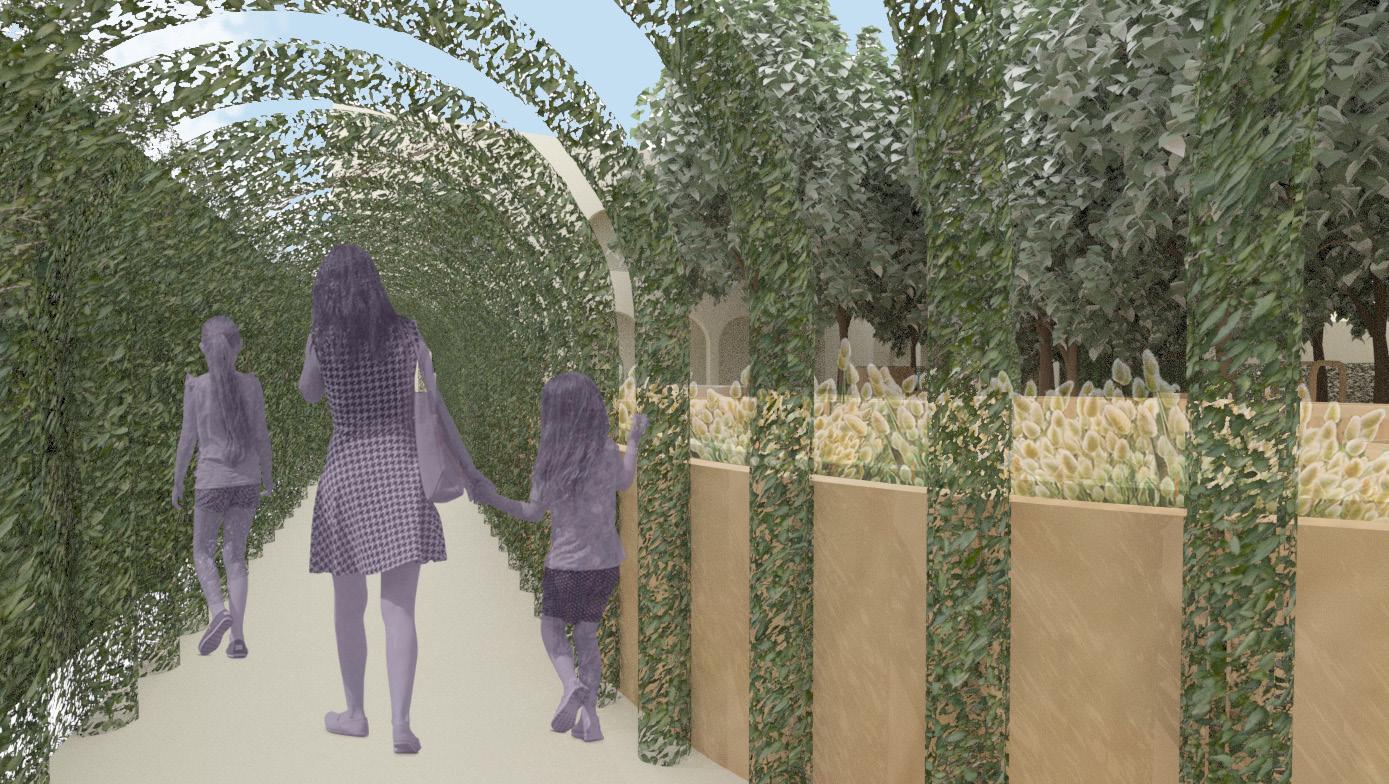
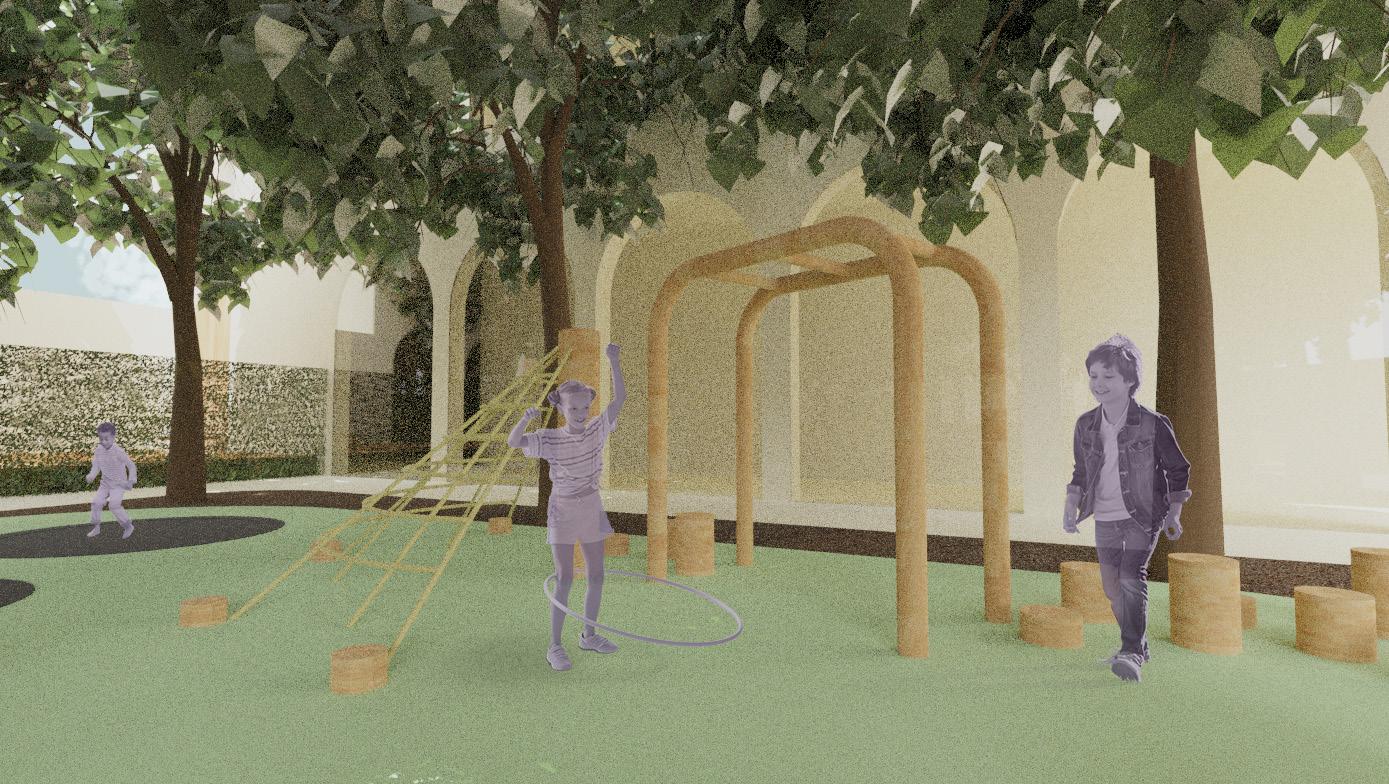

creativity space / mental and creative stimulation creativity space / mental and creative stimulation flowers and shrubs herbs and vegetables landscaping plan sensory garden / visual, auditory and olfactory sense stimuli creativity space / mental and creative stimulation gardening patch / tactile stimulation through gardening


